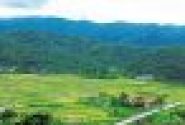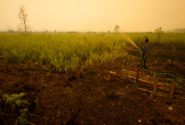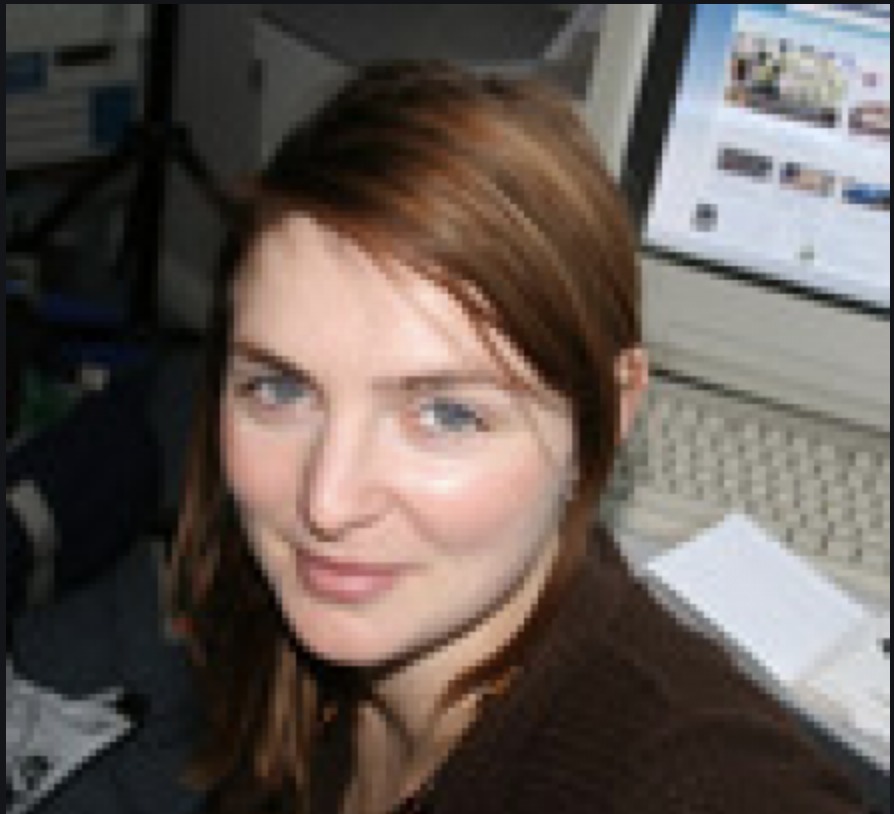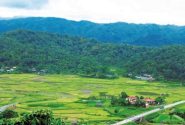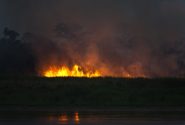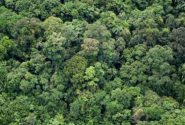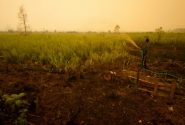
The most desirable scenario chosen by communities in land use planning workshops is one where the government involves communities in all aspects of land and forest management. Achmad Ibrahim/CIFOR
BOGOR, Indonesia (20 June, 2013)_Decision makers in West Kalimantan, Indonesia believe that mining, agriculture and oil palm developments are inevitable, but they now know that the negative impacts don’t have to be.
Rather, local leaders in the one of the only forested areas left in the Indonesian province have begun learning how to anticipate and prepare for the economic and environmental impacts of potential investments, thanks to a participatory scenario planning method developed as part of the Collaborative Land-use Planning and Sustainable Institutional Arrangements (CoLUPSIA) project.
“Huge investment is likely to bring both opportunities and challenges for development and there needs to be frank debate,” said Bayuni Shantiko, scientist with the Center for International Forestry Research and author of a report on the use of a method called Participatory Prospective Analysis developed by CIRAD.
Bayuni and his colleagues used Participatory Prospective Analysis in a series of workshops in Kapuas Hulu, a regency in West Kalimantan. The workshops brought together a broad range of local stakeholders, including community leaders, businesses, provincial government officials, international NGOs and local civil society groups. Through scenario building exercises and analysis, participants explored how land use and natural resource management could evolve over the next 20 years, and how these changes can be influenced.
“Use of this method gives people a chance to voice their hopes and fears and to create a shared vision of the future,” Bayuni said in a presentation at the 14th International Conference of the Commons in Kitafuji, Japan.
The aim of the exercise is to improve land management policy by helping policy makers construct “scenarios” in which they envisage the future impacts of development. The idea is that, by anticipating and preparing for possible ramifications, decision makers in Kapuas Hulu can avoid the negative impacts associated with past land investment in Indonesia, such as widespread deforestation and conflicts over rights and resources.
Toward an alternative future
Kapuas Hulu spans more than 3 million hectares and contains two national parks, Danau Sentarum and Betung Kerihun. The parks house an array of forest types, fish, mammal and bird species, including up to three percent of Borneo’s total orangutan population.
The regency is also home to more than 220,000 people, mostly indigenous Iban and Embaloh Dayak in the hills and Malay communities in the wetlands, who depend on fish and forest resources for their livelihoods.
However, in 2007, 19 palm oil companies were given permits for Kapuas Hulu covering 350,000 hectares. Some of these companies have failed to give the communities any compensation or left without providing the employment and better living standards they had promised, previous CIFOR research has found.
This was exactly the type of scenario that participants in the workshops were keen to avoid.
In the workshops, participants drew up four plausible scenarios for the future, which they then discussed.

Participants chose this scenario of community participation as the most desirable future. Bayuni Shantiko/CIFOR
The most desirable scenario selected was one in which the government involves communities in all aspects of land and forest management, and the customary system is acknowledged and accommodated.
The least desirable was a continuation of the present, where government takes a top-down approach to land use planning and communities’ land rights remain unclear or ignored.
When the majority of participants had found a common vision, they listed actions or solutions that would make the scenario a reality, such as establishing collaborative assessment of land conditions, designing new land allocation and legally-binding land use plans that all stakeholders are in consensus with.
An honest debate
But reaching that stage took some time, given the dynamics of the group.
“Getting stakeholders to talk freely was a challenge, especially when power relations and vested interests came into play,” Bayuni said. “Oil palm development is a sensitive issue for government officials and it was especially difficult for them to be challenged about it in a public environment.”
In addition, participants had very different motivations, backgrounds, levels of education and aspirations.
“At the beginning, people did not speak very frankly, but as the process evolved and they got to know each other, they started building trust,” Bayuni added. “By the second workshop, people were braver about speaking up and saying ‘I disagree with what you are saying’.”
Participants generally agreed that development was inevitable but their reactions to it were mixed. Many community leaders expressed fears that big investors would take their land and damage local livelihoods.
“We want development,” explained Mr. Luther, a customary leader from Kapuas Hulu. “But it should benefit us local and indigenous people.”
Government officials were concerned about access to roads, markets and education for a growing population with dwindling resources.
“We are committed to becoming a conservation district, but it doesn’t mean that we can not do any development activities in the district,” said AM Nasir, Kapuas Hulu district head.
Committing to change
Although the workshops have finished, the work hasn’t.
“One of the biggest challenges with the scenario method is turning results into reality,” Bayuni said.
“We can talk about it all we like, but if decision makers don’t think this is a useful approach or that the outcomes don’t benefit them, they might not be committed to changing policies to actually make it work.”
If more people are aware of how development is likely to affect their livelihoods and their environment, then that could push the government to act.
Governments serious about building a consensus on land management decisions must try to include all stakeholders in all aspects of decision making—and even that might not be enough, Bayuni added.
“Even if the government is keen to see this process rolled out and to get more people engaged, they may not have the resources or the institutional capacity to make it happen,” he said.
Paving the way towards the desired scenario, CoLUPSIA is generating land allocation and land-use maps with detailed land categories, in order to support the government in designing policies and in dealing with issues such as boundary disputes, land ownership and access to forest resources.
“One of the biggest challenges with the scenario method is turning results into reality,” Bayuni said.
Telling the public about the findings of the scenario-building exercise, such as by distributing leaflets or posters, could create enough pressure to keep governments committed.
“Access to information is key,” Bayuni said. “If more people are aware of how development is likely to affect their livelihoods and their environment, then that could push the government to act.”
For more information on the issues discussed in this article, please contact Bayuni Shantiko at b.shantiko@cgiar.org
The European Union–funded CoLUPSIA project is run by the International Center for Research in Agronomy and Development (CIRAD), in partnership with CIFOR, Perkumpulan TELAPAK, Association for Legal Reform based on Communities and Ecology (HuMA), TOMA (Ambon-based Environmental NGO), University of Pattimura and University of Gadjah Mada, Riak Bumi (Pontianak based Environmental NGO).
We want you to share Forests News content, which is licensed under Creative Commons Attribution-NonCommercial-ShareAlike 4.0 International (CC BY-NC-SA 4.0). This means you are free to redistribute our material for non-commercial purposes. All we ask is that you give Forests News appropriate credit and link to the original Forests News content, indicate if changes were made, and distribute your contributions under the same Creative Commons license. You must notify Forests News if you repost, reprint or reuse our materials by contacting forestsnews@cifor-icraf.org.
